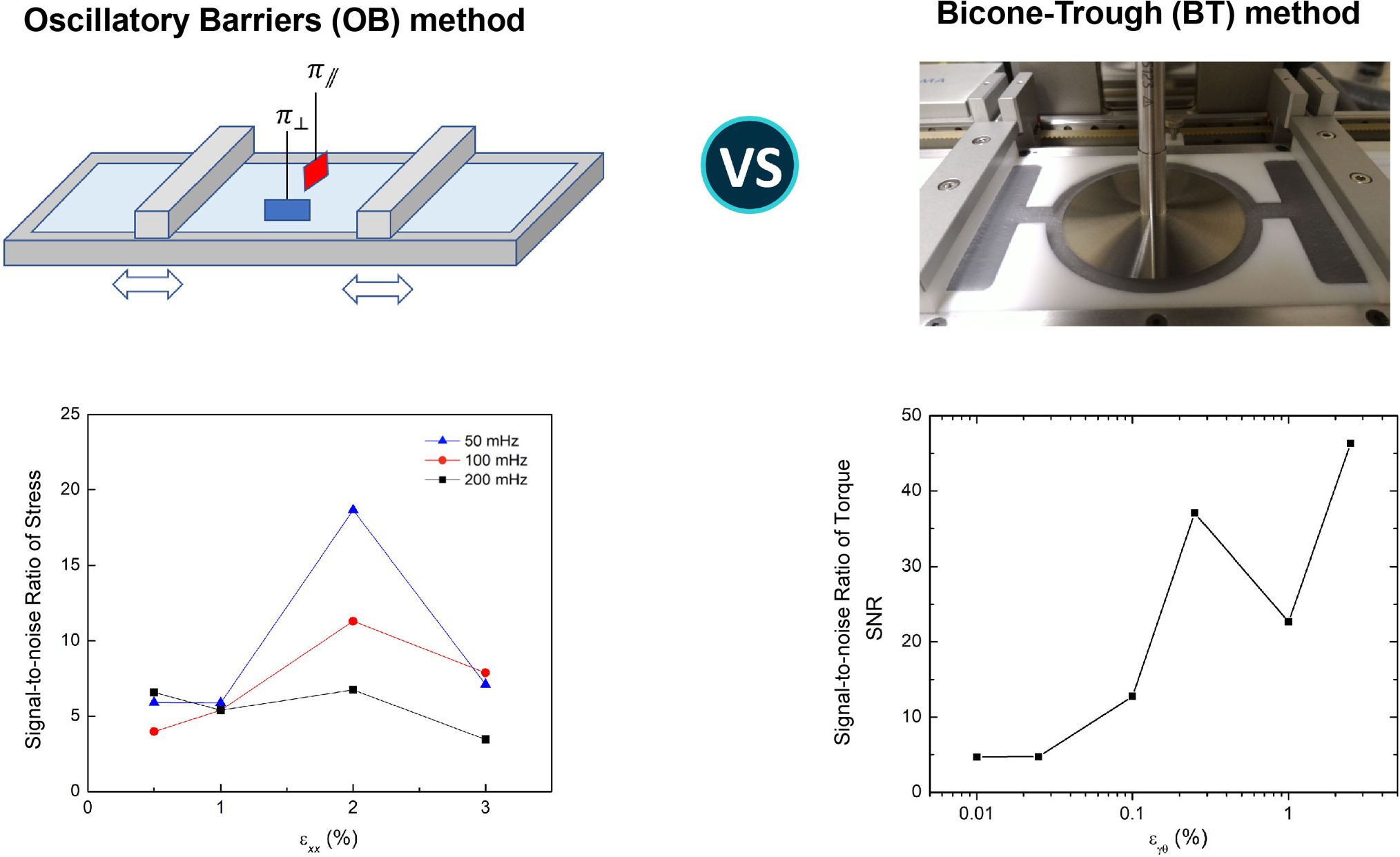https://doi.org/10.1140/epje/s10189-024-00411-0
Regular Article - Flowing Matter
Viscoelasticity of a carbon nanotube-laden air–water interface
1
Department of Chemical and Biomolecular Engineering, University of Connecticut, 06269, Storrs, CT, USA
2
Polymer Program, Institute of Materials Science, University of Connecticut, 06269, Storrs, CT, USA
3
Rheology Division, Anton Paar USA, 10215 Timber Ridge Dr, 23005, Ashland, VA, USA
Received:
14
November
2023
Accepted:
19
February
2024
Published online:
8
March
2024
The viscoelasticity of a carbon nanotube (CNT)-laden air–water interface was characterized using two different experimental methods. The first experimental method used a Langmuir-Pockels (LP) trough coupled with a pair of oscillating barriers. The second method is termed the Bicone-Trough (BT) method, where a LP trough was custom-built and fit onto a rheometer equipped with a bicone fixture to standardize the preparation and conditioning of a particle-laden interface especially at high particle coverages. The performance of both methods was evaluated by performing Fast Fourier Transform (FFT) analysis to calculate the signal-to-noise ratios (SNR). Overall, the rheometer-based BT method offered better strain control and considerably higher SNRs compared to the Oscillatory Barriers (OB) method that oscillated barriers with relatively limited positional and speed control. For a CNT surface coverage of 165 mg/m2 and a frequency of 100 mHz, the interfacial shear modulus obtained from the OB method increased from 39 to 57 mN/m as the normal strain amplitude increased from 1 to 3%. No linear viscoelastic regime was experimentally observed for a normal strain as small as 0.5%. In the BT method, a linear regime was observed below a shear strain of 0.1%. The interfacial shear modulus decreased significantly from 96 to 2 mN/m as the shear strain amplitude increased from 0.025 to 10%.
Supplementary Information The online version contains supplementary material available at https://doi.org/10.1140/epje/s10189-024-00411-0.
Copyright comment Springer Nature or its licensor (e.g. a society or other partner) holds exclusive rights to this article under a publishing agreement with the author(s) or other rightsholder(s); author self-archiving of the accepted manuscript version of this article is solely governed by the terms of such publishing agreement and applicable law.
© The Author(s), under exclusive licence to EDP Sciences, SIF and Springer-Verlag GmbH Germany, part of Springer Nature 2024. Springer Nature or its licensor (e.g. a society or other partner) holds exclusive rights to this article under a publishing agreement with the author(s) or other rightsholder(s); author self-archiving of the accepted manuscript version of this article is solely governed by the terms of such publishing agreement and applicable law.





